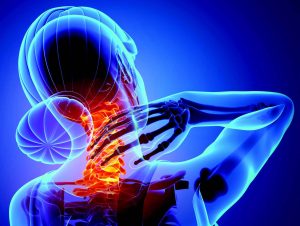 At this year’s American Society of Pediatric Otolaryngology Annual Meeting at the Combined Otolaryngology Spring Meetings in Boston, I was grateful to moderate a panel of experts I assembled on surgical ergonomics. This topic is highly personal to me and has impacted colleagues I know in otolaryngology who’ve suffered unanticipated and devastating career-ending injuries.
At this year’s American Society of Pediatric Otolaryngology Annual Meeting at the Combined Otolaryngology Spring Meetings in Boston, I was grateful to moderate a panel of experts I assembled on surgical ergonomics. This topic is highly personal to me and has impacted colleagues I know in otolaryngology who’ve suffered unanticipated and devastating career-ending injuries.
Explore This Issue
August 2023Despite a few recent publications in surgical journals that include otolaryngology, there remains a lack of awareness by surgeons and no standardized curriculum for trainees and practicing otolaryngologists on the prevalence of surgeons who endure pain and discomfort on daily basis. Ergonomic hazards and work-related musculoskeletal disorders (WRMSD) are among the most impactful, yet unrecognized, occupational hazards for all surgeons.
Our panel was titled, “Pain in the Neck (and More): How Surgical Ergonomics Impact Surgeon Wellbeing, Outcomes, and Careers,” and my esteemed panelists were:
- Tendy Chiang, MD, a pediatric otolaryngologist who presented his research on methods to measure and mitigate ergonomic risks.
- Daniel Wohl, MD, a pediatric otolaryngologist who shared pearls and strategies for best ergonomic practices in the operating room and in clinic when examining patients.
- Donald Shrump, Jr., DC, MS, a chiropractor, sport science expert, collegiate and elite athlete trainer, and researcher. He presented information on functional standards and surgeon- specific training to address neck, shoulder, and back pain.
- Stephanie Pearson, MD, an OB/ GYN who suffered a devastating, career-ending injury during a delivery seven years ago. She’s the founder of PearsonRavitz Disability Insurance, and she’s passionate about educating and helping physicians achieve professional protection through disability insurance.
- Geeta Lal, MD, an endocrine oncology surgeon, ergonomic coach, and speaker who is also president of the Society of Surgical Ergonomics.
While I wish you could all enjoy a video recording, that isn’t available, so this article will share key points from each panelist as well as actions that my fellow otolaryngologists can implement immediately.
Julie L. Wei, MD, MMM
As moderator of our presentation, I shared the results of our most recent surgical ergonomic survey deployed three weeks prior to the ASPO meeting. This survey was developed by Andrew Gabrielson, MD, a PGY-5 in urology at Johns Hopkins University and member of the Society of Surgical Ergonomics. The survey collected variables, including surgeon demographic, practice setting, surgical volume, procedure types, work-related musculoskeletal pain-related metrics, modifying factors, and knowledge of/attitude toward surgical ergonomics.
A total of 685 were sent the email survey; 118 practicing pediatric otolaryngologists completed it. This manuscript is currently submitted for publication, but as senior author I shared our key findings: